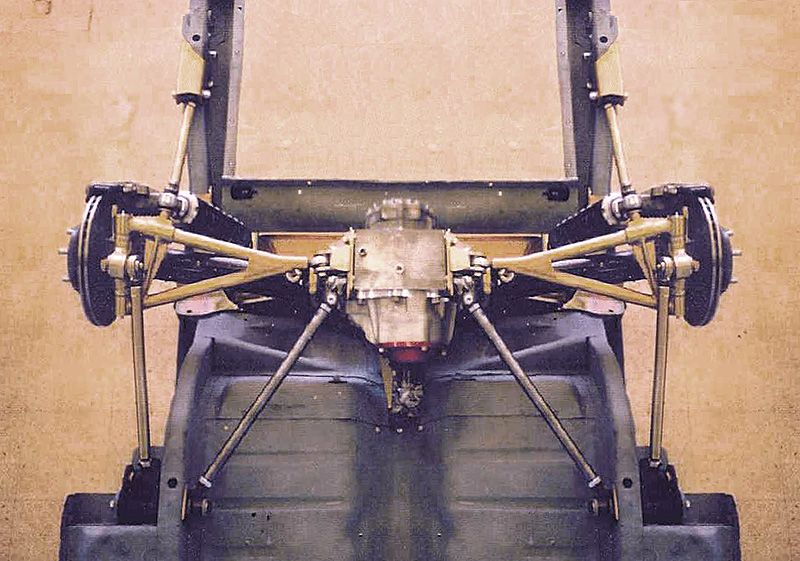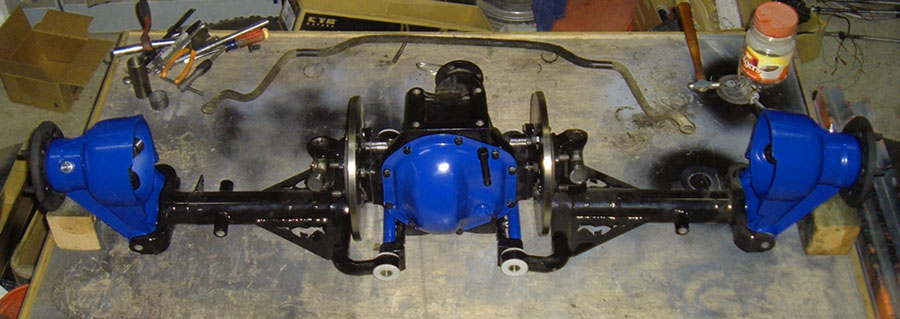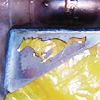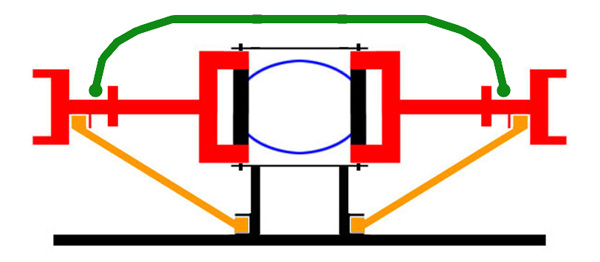

 |
 |
 |
 |
 |
You are not logged in. Would you like to login?
![]() Offline
Offline

on June 25, 2010, 10:18 pm, Daze wrote:
I have found two distinct camps, one says use grade 8 bolts because they are stronger and the other camp says use grade 5 because they will bend rather than break??? what are your thought?? I have some replacement differential side bracket bolts that are harder than grade 8, should I replace them for something softer for fear of breaking them??? I have never gotten an answer to this debate that I could really hang my hat on so I really look forward to your thoughts.

![]() Offline
Offline

on June 28, 2010, 2:44 am, tyrellracing wrote:
All critical bolts on all factory suspensions are grade 8 or better! Under no circumstance are grade 5 even remotely acceptable. The shear strength of a grade five is almost half that of a grade 8. Technically bolts are clamping devices. However many designers use them as locating devices. The locating of suspension parts using bolts will place the bolt in a shear load. This is the most common type of failure in bolts. Most people don't realize that suspensions get their abuse in spike loads. When your vehicle hits a pot hole at 50 mph the loading on critical bolts can exceed 10 to 20 times the vehicle weight due to stored energy called inertia. Grade 5 bolts don't perform well when they are subjected to spike loads. If you must use a bolt as a locating device, use a bolt with a non threaded shank that is long enough to pass through the shear area of the locating task. Grade 8 bolts are so far superior to grade five both in tensile and shear that I am shocked that any one even considered it. All bolts stretch when properly tightened. The elasticity of the bolt is what keeps it from coming loose and is how it provides the clamping force we all have become accustom to. Grade 8 bolts will stretch several thousandths when torqued and will come back to the original length when the load is released. Grade five bolts have so little elasticity they will not. All bolts can be over loaded and stretched beyond the point at witch they will return to their original length. This point is called the point of plasticity. When you over torque a fastener to the point of plasticity you have just ruined the fastener. The only exception to this statement is the torque to yield bolts that require that they be torqued past plasticity to perform properly. But that's another story. Nearly every bolt failure I have seen was due to bad application(too small or high shear), over torqued, or wrong grade for application. When I worked for Oregon spring we stocked all sizes of bolt from 1/4 20 to 1 1/4 10 and most common metric sizes. These were all grade 8 or metric grade 10 All we did there was suspension related and in the seven years there I never installed a single grade 5 bolt on any vehicle suspension.

![]() Offline
Offline

on June 28, 2010, 6:05 am, Joe wrote:
Bending vs Breaking If you take the same force that bent (failed) the grade 5 bolt and apply that force to the grade 8 bolt it will not fail.
Using a .250-inch diameter grade 8 fastener gives you the following shear capability:
A = Cross-sectional area of the fastener size (since bolt bodies/shanks have circular cross-sections, use area of a circle) = Pi x r2 where R (radius) = .250/2 = .125, therefore A = Pi x (.125)2 = .0491 square inches (in2)
Capability in shear = 91,000 lbs / in2 x .0491 in2 = 4468 lbs
Using the same .250-inch diameter grade 5 fastener results in the following:
Capability in shear = 75,000 lbs / in2 x .0491 in2 = 3683 lbs
That’s a difference of over 750 lbs or over 1/3 ton. In this example you can clearly see that using a grade 8 fastener has a superior advantage over the grade 5. Therefore the result is if someone is using grade 5 bolts in a shear application they will fail almost 800 lbs earlier.

![]() Offline
Offline

on June 28, 2010, 10:49 am, Daze wrote:
after a day went by and I hadn't gotten any responses to this question, I decided to do a little research on the subject and found a wonderful article on the subject at www.rockcrawler.com. Some how your post has the exact info I found there... I wonder how that happened
How is you project coming along???

![]() Offline
Offline

on June 29, 2010, 3:14 am, tyrellracing wrote:
Technically yes your strength of materials formulas are correct. My point of view is when fasteners are utilized correctly they never bend until the material being clamped fails. This would not be a bolt failure, this would be a failure of design. If a fastener has room to bend, it has already failed as a clamping device. Typically a fastener should penetrate the desired parts to be held together through a hole only big enough to provide a sliding fit. This will provide no additional radial movement. How many bent head bolts have you come across? Have you ever seen a center bolt fail in a leaf spring. Center bolts are typically grade 5 from the manufacturer because they reside in the in-active portion of the spring. If the u bolts stretch and loose their preload the center bolt can and sometimes will shear at every leaf simultaneously during acceleration or braking. I have witnessed this phenomenon literally thousands of times. On a half ton PU. that translates to 6 shears in a 3/8 grade 5 bolt. A grade 8 bolt in the same application will always dramatically out perform a grade 5.

![]() Offline
Offline

on June 28, 2010, 10:51 am, Daze wrote:
Thanks for the info!! I did a little research and came to similar conclusions, grade 8 is the only way to go. now I just need to figure out weather using nordlocks will mess up my torque specs or not.

![]() Offline
Offline
sorry to dig up an old thread but i could really use some good knowlege from those in the know...
im rebuilding a rear suspension on an old ford escort, 1996 3 door lx to be exact.
had it nearly 18 years and mother nature has gotten the best of it.
Anyway, after a futile attempt I needed to cut out each bolt that held the latteral links (control arms) to both the rear cross member and spindle knuckles...
They were 14mm diameter, class 10.9 (roughly equivlent to grade 8)
cross member side about 27cm long, spindle side 23cm or so.
Cheapest i can find the OEM parts for is $200 for the longer pair
FOCZ5Z998A
tinyurl.com/ofyqe4o
And about $90 for the shorter pair
FOCZ5Z997A
tinyurl.com/q5rrzmf
Call me cheap or call me poor, but im having trouble justifing the cost of these new bolts on such an old vehicle.
Cuz for a mere $8 at fastnal, partially threaded (DIN 931) 280mm, 14mm bolts 8.8 (roughly equivlent to grade 5)
Fastenal Part No. (SKU):38997
tinyurl.com/qfpmofd
So here is the rub... the OEM bolts are reduced at the ends to 12mm fine thread.
Isnt it true that a bolt is weakest at its thinest points...
And when you run the numbers on a 12mm 10.9 vs a 14mm 8.8, the tensile yeild strength comes out almost identical !!
Therefore might this not be a feasible alternative?
The car will be lightly used as a utility vehicle haul somethign to the dump, or when i cant ride my bike to work one fairly well maintained roads, infrequently enough that it will be no trouble keeping an eye out for potholes when using the vehicle.
thanks in advanced
Last edited by axa (1/16/2014 5:16 pm)
![]() Offline
Offline
I should also ask where else might i find a good deal on large high strength bolts as used in suspensions.
Again im looking for a pair of equivently 10.9 class 14mm x min 260mm
and pair min 220mm
Last edited by axa (1/16/2014 5:15 pm)
![]() Offline
Offline

Try Phantomjocks list here, here's the link.
Or Graingers, McMaster Carr, MSC or Industrial Depot.
Ralphy
Last edited by Ralphy (1/17/2014 4:42 am)
![]() Offline
Offline
axa wrote:
So here is the rub... the OEM bolts are reduced at the ends to 12mm fine thread.
Isnt it true that a bolt is weakest at its thinest points...
And when you run the numbers on a 12mm 10.9 vs a 14mm 8.8, the tensile yeild strength comes out almost identical !!
Therefore might this not be a feasible alternative?
So anyone recall Strength of Materials 101?
![]() Offline
Offline

I have a local company called fasteners than can get me just about anything. We also have Fastenall but they want 3 times for everything and there customer service is not great (at least here locally) They have yet to not at least be able to order what ever I am looking for.
As to the concept of it only being as strong as the narrowest part, yes and no ![]() do you have a picture of what is left of the bolt so I can see the size change you are referring to??
do you have a picture of what is left of the bolt so I can see the size change you are referring to??

![]() Offline
Offline

Okay I had only read your last post. I'm guessing the bolts you have, sit the side load on the large diameter. Not on the thread diameter. Being that the loads are 90 degrees from the length. The manufacture felt the need for a maybe lighter or smaller end for clearances. Or maybe it's a stop so as to not squeeze the parts and bind. Can and are you willing to use a standard bolt? As daze said, got pics? Something similar used is a shoulder bolt or called a stripper bolt by die makers.
How about a bone yard!
So your looking for a very unique specific small run bolt for dime store prices? LOL Good luck, maybe used like off Ebay? You can't compare prices of a bolt they make millions of compared to a low run very specific design.
So your look for this? A shoulder bolt? Typical shoulder bolts I've seen a fairly hard and precision ground on the OD.
Then again is it a bolt or stud? Studs are threaded at both ends.
FleeBay $110.00
FleeBay $93.00
Oh, that's probably for one bolt! Ouch!
Ralphy
Last edited by Ralphy (1/17/2014 10:09 pm)
![]() Offline
Offline
" I'm guessing the bolts you have, sit the side load on the large diameter. Not on the thread diameter. Being that the loads are 90 degrees from the length. The manufacture felt the need for a maybe lighter or smaller end for clearances. Or maybe it's a stop so as to not squeeze the parts and bind. "
This I would think is the correct answer. This set up is common in many apps using bushings. More so it seems in factory suspensions. The actual strength of the bolt probably isn't as critical as the O.D and surface finish of the part that contacts the bushing. Shocks and shackles use something similar but would use a sleeve to get the O.D. and stop length correct.
![]() Offline
Offline
If for not the advantage of having these parts in hand, indeed those would have been my estimates for a reduced thread as well.
But as you may be able to see in the pics linked here the threads the reduced shank doesnt seem to make much sense.
In pics bolt_xmember 1 and 2, i lined up how the hardware sits on the end of the xmemeber bolt (minus the end nut which is just a typical flange nut for a 12mm fine thread)
Take note that the reduction ends less than half way into the bushing... so even though that end washer is a 12mm hole, it comes no where near the reduction.
Therefore we must eliminate the purpose that it reduces clamping pressure.
Never mind the fact that it is hardly taking advantage of the full length of the bushing... not even half way so that makes me wonder as well.
So in my estimation the worst loads must be seen when as mentioned in this thready, you hit a pot hole flying down the highway...
in this case these latteral links get pushed towards the back of the vehicle, torque multiplied by the length of these arms (about 18" or so at nearly 90°) and only by the grace of either god, the rubber in the bushings, or the class 10.9, does the nut side not get popped off.
This is why i guessed that if this system failed, it would be at the reduced thread rather than anywhere else... cuz if the wheel gets hit from the side, in the lateral direction, shear to these bolts, i wouldnt be expecting to drive away anyway.
Now with the fastnal grade 5 bolt i will at least get as i mention the increased thread diameter, but also full shank throughout the bushings with the OEM parts lack.
thats my guestimation.
So, what do you think, we good with the grade 5 at the xmember?
shame is if i would have just taken my time and gotten some leverage, this crossmmeber bolt would have come off easy just as the other side did.
its those dang spindle sides i needed to take the slege hammer
![]() Offline
Offline

Looks to me like your supposed to draw it up tight against the taper. Again it's a stop so you don't over do it and squeeze things to tight. Also it will not back off. I'm gonna guess the washer/flange has the same taper as the bolt.
Can you re-assemble one side, measure the inside width. Keep for records. Then open the small diameter for a standard bolt and use a locking nut so it won't back off.
That looks like an Ohio car! lol
Ralphy
Last edited by Ralphy (1/20/2014 8:09 am)
![]() Offline
Offline
Ralphy wrote:
Looks to me like your supposed to draw it up tight against the taper. Again it's a stop so you don't over do it and squeeze things to tight. Also it will not back off. I'm gonna guess the washer/flange has the same taper as the bolt.
Can you re-assemble one side, measure the inside width. Keep for records. Then open the small diameter for a standard bolt and use a locking nut so it won't back off.
That looks like an Ohio car! lolRalphy
I think theres a bit misunderstanding, there is absolutly NOTHING being stopped by this taper, it sits well inside not petruding past halfway of that bushing... and everthing including that bushing, is up to the end washer is 14mm so there is just no chance...
the line up is that of the pic, puting the bolt on top of the bushing so you can see where the taper sits far inside the bushing.
the line of compression goes, NUT, washer, rear later link bushing, crossmember, front lateral link bushing, bolt head... absolutly no compression on the taper from anything.
Last edited by axa (1/20/2014 10:24 am)
![]() Offline
Offline

Okay....... let me throw another dart. They may have found it easier to assemble during manufacture. Don't worry about it. Just get a standard high grade bolt and open the washer.
Ralphy
![]() Offline
Offline
Ralphy wrote:
Okay....... let me throw another dart. They may have found it easier to assemble during manufacture. Don't worry about it. Just get a standard high grade bolt and open the washer.
Ralphy
BULLS EYE!!
i suppose all i really wanted to hear was that it is going to pop off on the first, or or the next, speed bump...
so if no one else knows any better...?
well i saved the other xmember bolt, and will replace the 2 other link ends with 10.9 oem spec so perhaps when i find a bone yard someday ill try and pull the one...
thanks for the help... now on to the front! is there a IFS forum?
Last edited by axa (1/24/2014 2:51 am)
![]() Offline
Offline
Was wondering if in the end you replaced the bolts with OEM or alternate on your Escort?
I'm currently in the same predicament as you were regarding way overpriced fasteners. I need to replace both the inboard and outboard, and have been searching for the best option outside OEM.
Seems that the only bolts I can find are Grade 5 equivilant, which I was hoping to find something 8 or better.
Any luck?
![]() Offline
Offline
i hadn't yet ride on the suspension.... I saved some money indeed, and don't worry about breaking the bolt so much but I realize I swapped alloy for plain steel and it won't be long till the bolts get stuck again and Ill have to cut those out too..
I'd recommend whatever you do, DONT use steel!
I covered mine with under coat, but I'm not kidding myself
.. if I did it again I'd pay up.